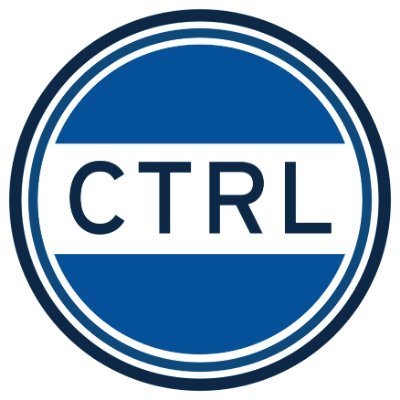Students as People: Moving Toward a Whole Student Approach
By Iana Amiscaray, M.Ed.
How did we get here?
Burnout has become my new best friend. As someone who has occupied roles both as teacher and student, and who is now making their way into educational leadership and policy, the equity gaps present in academia, the lack of systemic supports, and their damaging effects on us as people have only made themselves clearer. When I became aware of the ‘whole child education’ framework, I thought to myself, “I hit the jackpot! An approach to education that is built to humanize us.” So, I set out a goal in my research to build a whole student framework grounded in the higher education classroom setting.
From Whole Child to Whole Student
The whole child education movement in K-12 is focused on changing the education system in a way that “recognizes the connections between children’s social, emotional, cognitive, and academic development, as well as their physical and mental health.” I immediately hoped that a similar movement was happening in the higher education context. When I started digging, I learned that in fact, accommodating whole student needs has been a progressive phenomenon throughout the evolution of higher education in the U.S.
Student housing, dining halls, financial assistance, counseling centers, student affairs, and buildings dedicated to athletics all work to ensure nonacademic student needs are met. The pandemic certainly spurred a renewed interest to reach students beyond their academic selves and extend grace to students and faculty alike in “unprecedented and difficult times.” The increase in articles, guides, resources and workshops on social-emotional learning and trauma-informed care are proof of this growing perspective on redressing student needs.
So, elements of whole child approaches do exist in the broader system of higher education, but classrooms desperately need them, too, and they are often missing in course design. Many of these departments are also siloed and impede on a truly whole student approach. A whole student approach will help us explicitly recognize and act on opportunities for collaboration between instructors and the rest of the university to improve learning environments and outcomes for students.
An Assessment of AU and CTRL
The framework I created was based off Steven Mintz’s forecasting of K-12 trends that are making their way into the higher education context. Mintz predicted 7 trends which were then translated into their own criterion (See figure 1).
Figure 1. K-12 Trends in Higher Ed1. Prioritizing Equity 2. Differentiated Instruction 3. Skills & Outcomes Focus 4. Life Skills & Social Emotional Learning 5. Redesigning Assessments of Learning 6. Addressing Nonacademic Barriers to Student Success 7. Building a Learning Ecosystem and Wraparound Supports |
I partnered with Dr. Erin Horan to create a matrix and organize the ways in which these trends have or have not manifested into the higher education context – both broadly across academia and particularly at AU and CTRL (see Figure 2).
Figure 2. Analysis Categories1. Stratification (institutional or departmental) 2. Description of successful adaptations in higher education 3. Challenges/critiques in the higher education context 4. Evidence of AU Faculty Development Programming and Policies 5. Implications for Faculty 6. Appraisal of AU/CTRL 7. Implications for CTRL |
In analyzing the evidence that we gathered, I began to realize how reminiscent these trends were to a whole child framework because 1) they are aware of the learner and centered on the learner’s experience, and 2) they consider how learning and instruction are affected by factors both in and out of the classroom. This became the impetus to understand how to adopt a whole child framework for a post-secondary setting, a “whole student education.”
Implications for scholar practitioners
To assess the evidence, I created an appraisal scale based on the number of programs and resources available to faculty and students, and each criterion was deemed either successful, effective, improving, needs work, or ineffective. AU was “effective” in more than half of the criteria (prioritizing equity, embracing differentiated instruction, skills and outcomes focus, and addressing nonacademic barriers to student success). However, none of the criteria were “successful.” We concluded that each area of focus must still be constantly improved, and if we are to expect faculty and staff to adopt a whole student approach, it must come with the appropriate support to do so.
Often what’s missing in cultural shifts within any system (education, healthcare, etc.) is that people are expected to immediately understand the change and act accordingly. Part of understanding the whole student / whole person is recognizing that expectations and desired outcomes must come with effective and accessible supports. The list of implications for faculty to feel confident in entering the classroom with a whole child approach in mind included the following:
- Workshops to apply social justice / culturally responsive principles into courses
- Professional development seminars to manage research and teaching responsibilities
- Mentorship programs to guide new instructors in capstone courses
- Interdepartmental collaborative practices
- And instructor how-to guides to effectively support students academically with wraparound supports (beyond a presentation of available resources)
The implications for CTRL are similar. As a center dedicated to teaching, research, and inclusive excellence, CTRL would be remiss without expanding in the following areas:
- Universal Design for Learning strategies and experiential learning opportunities
- Social justice and culturally relevant resources, and programming
- Deep partnerships and collaborative leadership structures with other campus offices, especially the Counseling Center
- Resource dissemination and communications to better support instruction and learning
Conclusion
The key to adopting a whole student approach to learning is understanding that instructors are not the sole arbiters of education and student affairs should not be solely responsible for students’ lives outside of the classroom. The community we foster is vital to truly adopting a whole-student approach in higher education. If we continue to feed a system that silos our collective role in teaching and learning, burnout will continue to be the best friend we never wanted.
Note: A limitation to this analysis is what impact the programs have on participants and how accessible they actually are. Their existence on campuses does not mean that student needs are being met. Future research is needed to determine how programs, partnerships, and services are improving post-secondary student experiences and outcomes.
Author Profile
Iana Amiscaray, M.Ed. is a recent graduate of AU’s Education Policy and Leadership program, and the former managing editor of the CTRL Beat. She is currently focused on continuing LGBTQ+ equity and advocacy work to help improve the experiences of LGBTQ+ folks both in and outside of the university classroom at the AIDS Foundation of Chicago.
References
“Whole Child Education.” (2022) Learning Policy Institute. https://learningpolicyinstitute.org/issue/whole-child-education
Mintz, Stephen. (2020) “K-12 Trends and the Future of Higher Education.” Inside Higher Ed. https://www.insidehighered.com/blogs/higher-ed-gamma/k-12-trends-and-future-higher-education?v2



